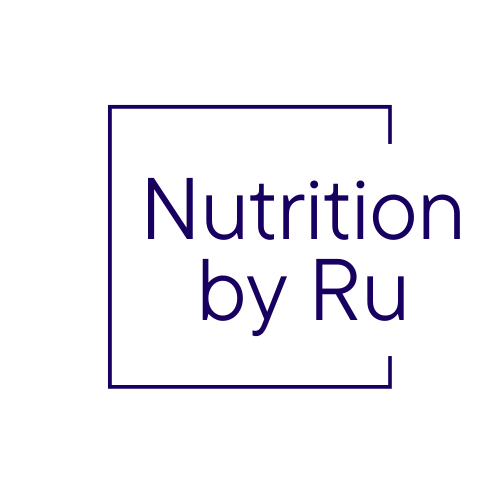
Detox: Why your body does it better than a juice cleanse and how you can support it
Rusne Zalnoraite“Detox” is a word that gets thrown around a lot every January. Besides being an aggressively used marketing term, what does it really mean in the context of your body? And do you really need to rely on celery juices and teas that make your tummy churn?
The answer is both, very simple and very complex. It’s simple because you do not need to rely on fad products to rid of toxins – your body has got it covered. However, this is also where the complexity lies; there are multiple organs, tissues and processes that maintain your body in homeostasis (or in balance). And they work together beautifully to keep you thriving. What this means though, is that there is no one magic potion that will cleanse your body after a heavy weekend.
Whilst there might not be a quick fix, you can support your body’s natural detoxifying capabilities through evidence-based strategies, and the HUM2N team of world-class experts is here to coach you through the journey. In this article, we will delve into the science behind your body’s natural detoxifying mechanisms, discuss why it’s important that these mechanisms work optimally and break down some of our top strategies in supporting your natural detoxifying capabilities.
Detoxification and toxins: what’s the issue here?
Detoxification is the natural process of eliminating unwanted substances from your body safely. You are exposed to these substances all the time as you interact with the environment – toxins produced by microorganisms, pollutants, natural plant toxins, excess vitamins, BPAs and so on. Some of the toxins you produce yourself as part of normal metabolism, such as ammonia from protein digestion. Our bodies are designed to be very robust, and exposure to toxins is very normal as long as it is dealt with correctly and optimally.
However, there is evidence to suggest that chronic long-term exposure to toxins of modern living, such as BPA in plastics, environmental pollutants, and heavy metals, may be overwhelming our detoxifying capabilities, leading to potentially dangerous build up.
Liver
Amongst hundreds of other activities, our liver plays a key role in our body’s defence. Every day, the human organism may be exposed to hundreds of exogenous chemical substances in food and drink, in the air, and in drugs [1]. This key organ filters the blood that leaves the stomach and intestines, and processes it by breaking down, balancing, and creating nutrients, and getting rid of drugs and other poisonous substances.
The liver has two main phases of detoxification, which rely on the expression of a wide variety of enzyme systems, that transform harmful substances into forms that can be safely excreted [1]. Therefore, optimal functioning of the liver and its enzyme systems is important. However, when the liver is damaged, it cannot function as well. There is growing concern about endocrine disrupting chemicals (EDCs) that can be found in our environment [2,3]. “EDCs can exert effects either as unchanged substances or after their biotransformation into metabolites that may be more potent than the parent compounds” [4] eliciting negative effects on health. In the liver, exposure to EDCs has been linked to liver injury and the development of non-alcoholic fatty liver disease (NAFLD). That is because liver is the first-line defence against toxins [5]. NAFLD may result in altered detoxifying capacity. Other factors that may alter liver’s ability to defend your body is alcohol as well as genetic mutations.
Kidneys
The role of the kidneys is to excrete wastes, toxins, and excess water from the body, in the form of urine. Urine travels through tubes known as ureters and into your bladder.
When the kidneys are damaged, they can't filter blood as they should. The result can be a build-up of waste in your body, as well as other problems that can harm your health [7]. “Worldwide, diabetes mellitus is the most common cause of chronic kidney disease, but in some regions other causes, such as herbal and environmental toxins, are more common” [8].
Digestive system
Firstly, your liver’s detoxification pathways need an abundance of specific nutrients to function properly [9]. Therefore, the digestive plays a key role here as it breaks down foods into nutrients that can be utilised by your cells. In fact, some findings indicate that specific foods may upregulate or favourably balance metabolic pathways to assist with toxin biotransformation and subsequent elimination [9]. Secondly, the liver receives blood from the digestive system in order to process it.
Skin
Skin is the largest organ in your body. Your body expels toxins, such as heavy metals, by dermal excretion (or sweat) which is why the skin is so crucial in the detox process. Because sweating aids in the removal of toxins, exercising and going to the sauna can assist ensure that the toxins you're trying to get rid of leave your body efficiently and effectively [10].
Lymphatic system
The lymphatic system transports a fluid called 'lymph' around the body. This fluid travels through lymph nodes (glands) located all over your body. It is like the “sewage system” that protects body from disease by removing germs (bacteria, viruses and parasites) and toxins (poisons), and helping to destroy cells that are old, damaged or abnormal [11]. Factors like sedentary lifestyle, stress, tissue injury, etc, restrict the flow of lymph. Enhancing lymph movement therefore improves the detoxification process.
Our approach to detoxification:
Detoxification is a natural process of eliminating unwanted substances from your body, and you can support your hard-working organs and systems in the process. Whilst this might not be as simple as drinking celery juice, some changes to your lifestyles habits can absolutely help.
Here are some healthy lifestyle habits that promote detoxification:
- Drink more water: it’s hard to get enough water but really focus on this goal as it’s important to make sure your body has enough liquid for excreting those toxins.
- Eat a rich and nutritious diet, to make sure you have all the nutrients needed for optimum detoxification processes. Many enzymes involved in liver detoxification rely on nutrients from our diet to function.
- Drink alcohol sparingly and try out some non-alcoholic alternatives. At minimum, adhere to the government recommendations and enjoy your drinks responsibly. Your liver will thank you!
- Get your sweat on! Exercise and treat yourself to regular sauna sessions – this will help flush out toxins such as heavy metals.
- Choose BPA-free products like water bottles and food storage products. Look for products specifically labelled 'BPA-free. Choose cosmetics labelled ‘paraben-free’.
- Stay away from unnecessary medication and recreational-drugs; your liver treats them as toxins, putting an extra-strain on the already busy organ.
- Stretch, walk, move regularly throughout your working day to get that lymph flowing.
- “Manual lymphatic drainage (MLD) massage is widely accepted as a conservative treatment for lymphedema”1[12], but may also be useful for healthy individuals.
References
[1] Grant, D. M. (1991). Detoxification Pathways in the Liver. Journal of Inherited Metabolic Disease, 421–430. doi:10.1007/978-94-011-9749-6_2
[2] Xiangjun Fu, Jie He, Deliang Zheng, Xuefeng Yang, Pan Wang, FangXu Tuo, Lin Wang, Shixu Li, Jie Xu, Jie Yu. (2022). Association of endocrine disrupting chemicals levels in serum, environmental risk factors, and hepatic function among 5- to 14-year-old children. Toxicology, 465. https://doi.org/10.1016/j.tox.2021.153011.
[3] C.D. Metcalfe, S. Bayen, M. Desrosiers, G. Muñoz, S. Sauvé, V. Yargeau. (2022). An introduction to the sources, fate, occurrence and effects of endocrine disrupting chemicals released into the environment. Environmental Research, 207. https://doi.org/10.1016/j.envres.2021.112658.
[4] V. Ho, L. Pelland-St-Pierre, S. Gravel, M.F. Bouchard, M.-A. Verner, F. Labrèche. (2022). Endocrine disruptors: Challenges and future directions in epidemiologic research. Environmental Research, 204. https://doi.org/10.1016/j.envres.2021.111969.
[5] Lindsey S Treviño, Tiffany A Katz. (2018). Endocrine Disruptors and Developmental Origins of Nonalcoholic Fatty Liver Disease, Endocrinology, 159 (1). https://doi.org/10.1210/en.2017-00887
[6] Naik Adviti, Belič Aleš, Zanger Ulrich, Rozman Damjana. (2013). Molecular Interactions between NAFLD and Xenobiotic Metabolism, Frontiers in Genetics, 4, doi: 10.3389/fgene.2013.00002
[7] https://www.hopkinsmedicine.org/health/conditions-and-diseases/chronic-kidney-disease
[8] Vivekanand Jha, Guillermo Garcia-Garcia, Kunitoshi Iseki, Zuo Li, Saraladevi Naicker, Brett Plattner, Rajiv Saran, Angela Yee-Moon Wang, Chih-Wei Yang. (2013). Chronic kidney disease: global dimension and perspectives, The Lancet, 382(9888),260-272. https://doi.org/10.1016/S0140-6736(13)60687-X.
[9] Hodges, R. E., and Minich, D. M. (2015). Modulation of Metabolic Detoxification Pathways Using Foods and Food-Derived Components: A Scientific Review with Clinical Application. J. Nutr. Metab, 760689. doi:10.1155/2015/760689
[10] Sears, M. E., Kerr, K. J., & Bray, R. I. (2012). Arsenic, cadmium, lead, and mercury in sweat: a systematic review. Journal of environmental and public health, 2012.
[11] https://lymphoma-action.org.uk/about-lymphoma-what-lymphoma/lymphatic-system
[12] Thompson, B., Gaitatzis, K., Janse de Jonge, X., Blackwell, R., & Koelmeyer, L. A. (2021). Manual lymphatic drainage treatment for lymphedema: a systematic review of the literature. Journal of cancer survivorship : research and practice, 15(2), 244–258. https://doi.org/10.1007/s11764-020-00928-1
